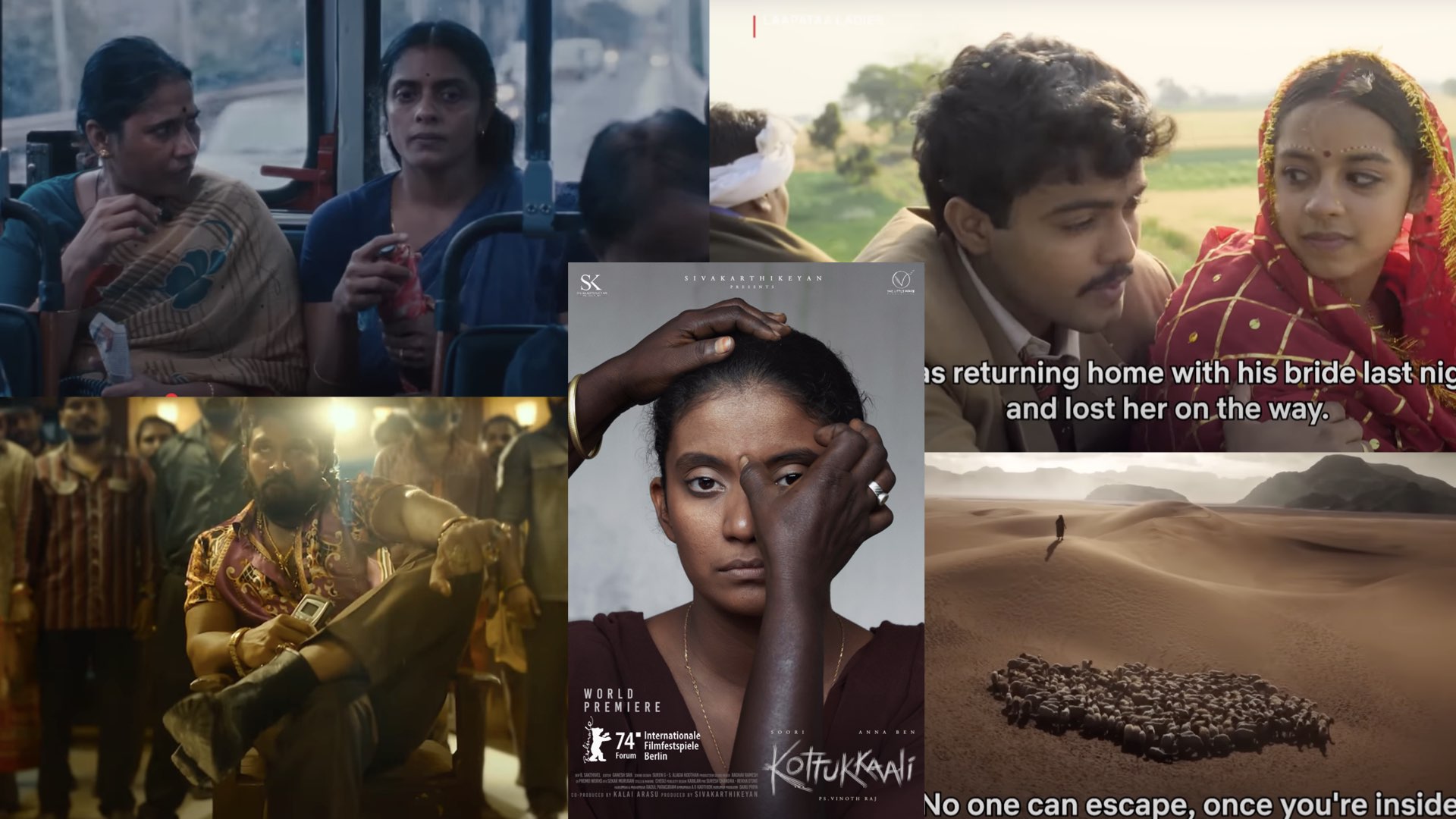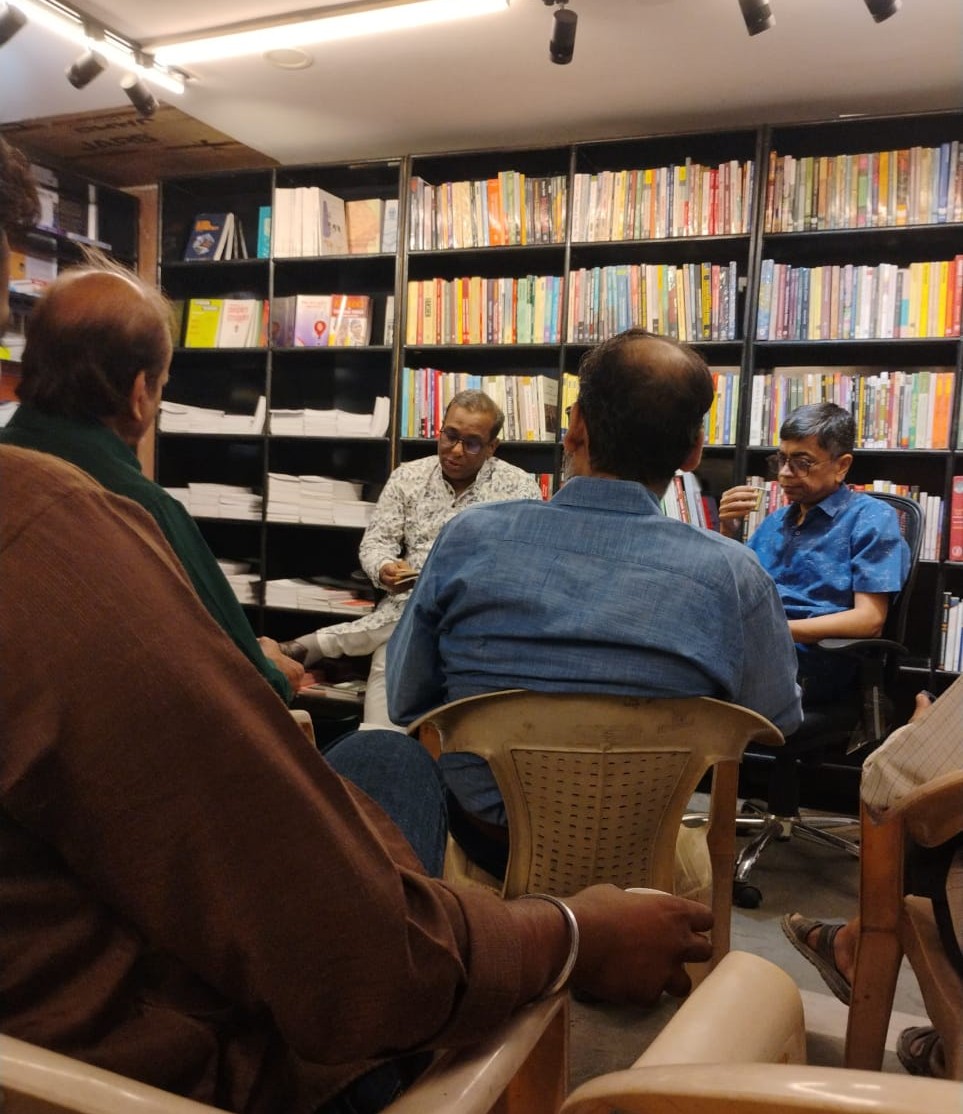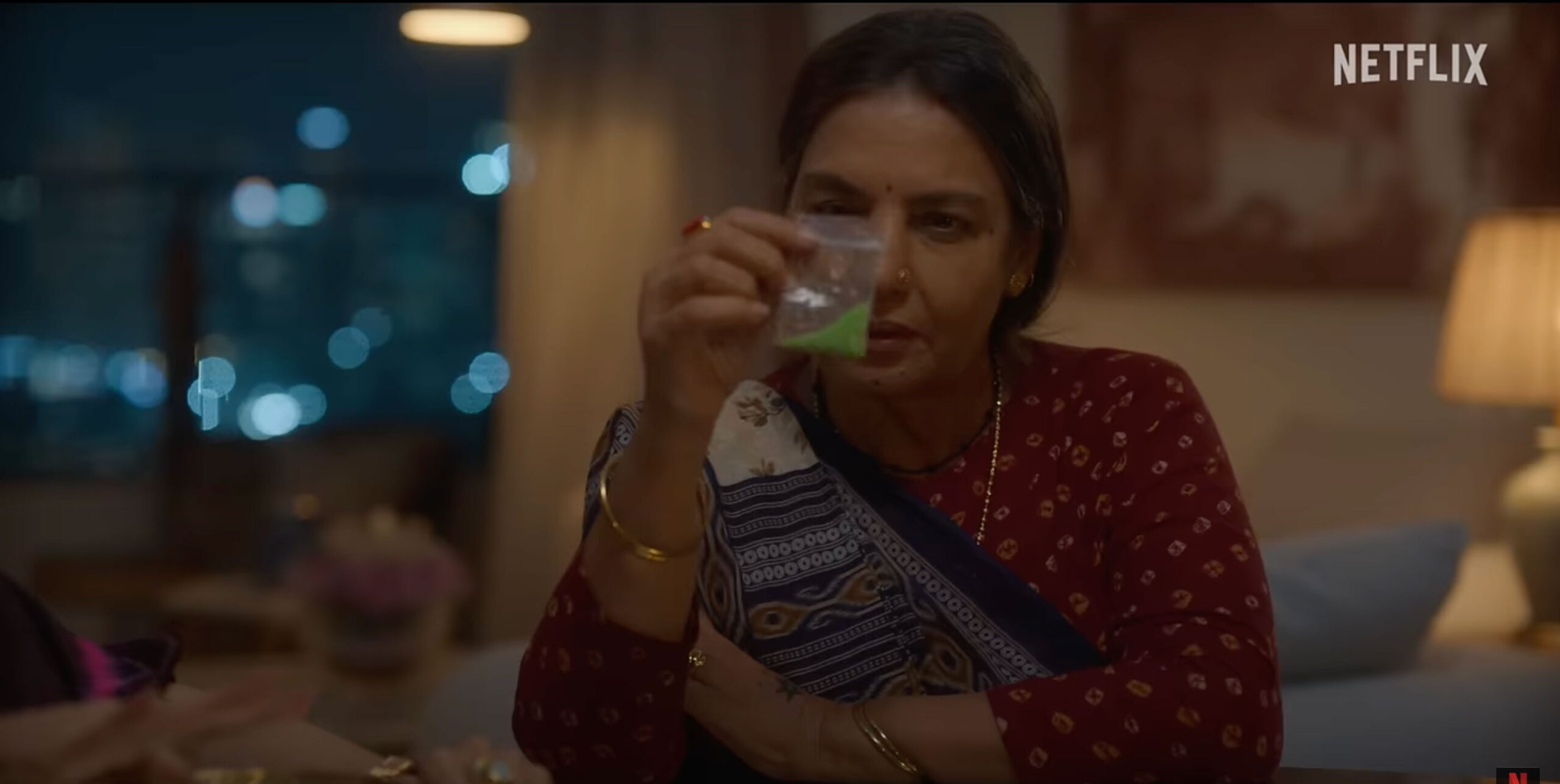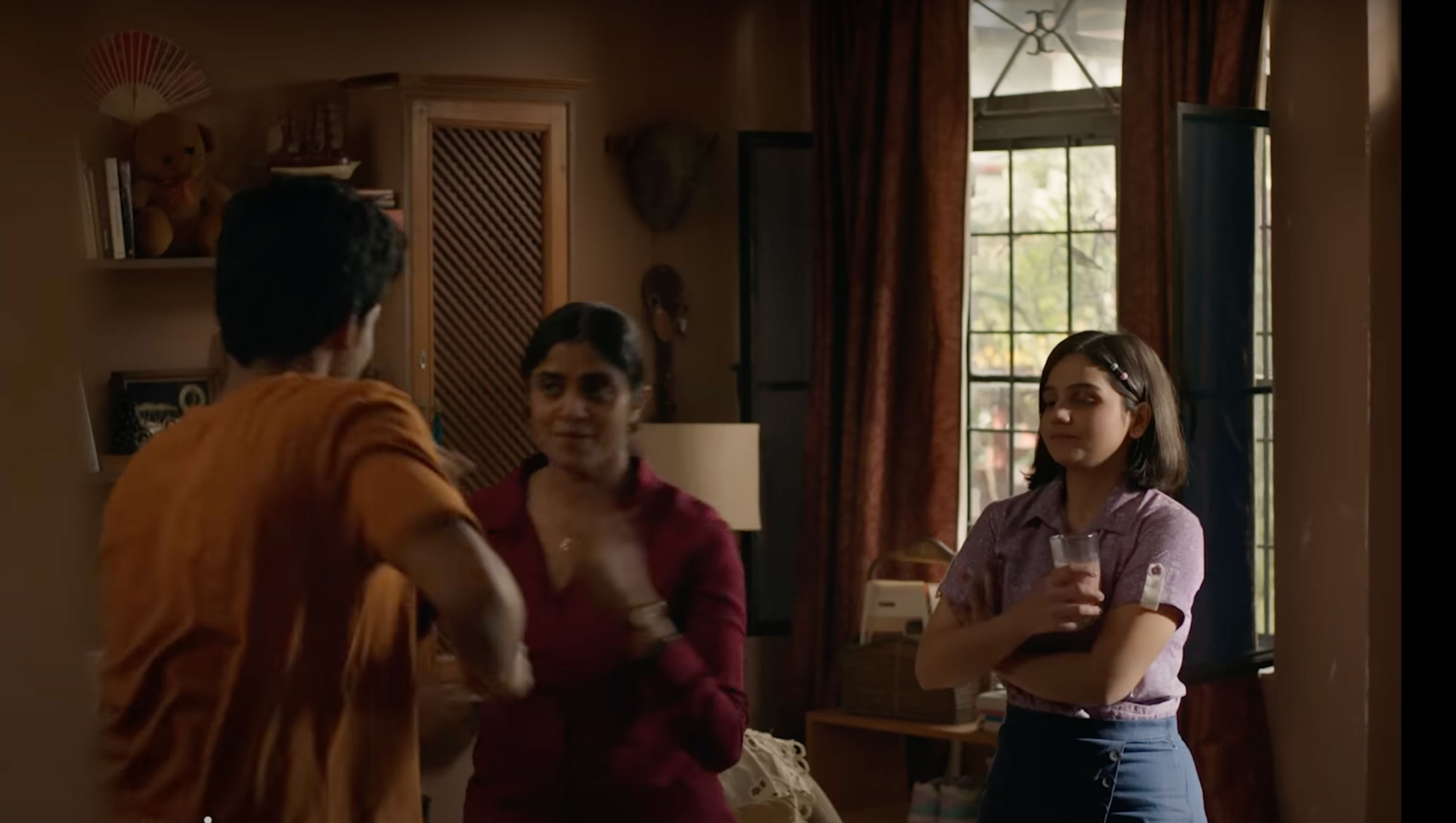As 2024 draws to a close, it’s time to reflect on the year in Indian cinema from an anti-caste perspective. We look back at contributions of filmmakers from Dalit communities, as well as those from other backgrounds to understand how vantage offered by their caste as well as politics have shaped storytelling, representation and narratives on screen.
We will begin by spotlighting films directed by Dalit filmmakers, analyzing how their works have contributed to anti-caste discourse and expanded the cinematic vocabulary for marginalized voices. Then, we’ll turn our focus to films directed by non-Dalit filmmakers, exploring how their depictions engage with – or fail to engage with – issues of caste. This dual lens will help us assess the evolving dynamics of representation in Indian cinema and the ways in which the medium has responded to or resisted the call for caste equity in 2024.
This year, Pa. Ranjith’s film Thangalaan has emerged as one of the most significant contributions to anti-caste cinema, becoming a monumental hit. The film delves deeply into the assertion of Bahujan history, celebrating the warriorship and resilience of marginalized communities. Drawing inspiration from Dr B.R. Ambedkar’s seminal work, The Untouchables: Who Were They and Why They Became Untouchables, the narrative seeks to re(claim) and expose the systematic distortion of Buddhist (former Untouchables’) history under the influence of Brahmanism. By weaving these historical and sociopolitical elements into its storyline, Thangalaan acts as a powerful medium for deconstructing dominant narratives while reasserting the pride and dignity of Bahujan communities.
Another notable addition to Tamil cinema’s repertoire of anti-caste films is Kottukkaali (The Adamant Girl) by P.S. Vinothraj. This film explores the intricate dynamics of caste and love through the lens of a couple from different castes. The story unfolds under the scrutiny of the ‘upper caste’ girl’s family, who perceive her transgression and rebellion as evidence of possession or deviance. By addressing the psychological and societal pressures faced by individuals in inter-caste relationships, Kottukkaali offers a poignant critique of caste-based oppression and the patriarchal structures that enforce it.

In the realm of sports, S. Jayakumar’s Blue Star tackles the pervasive issue of caste-based discrimination within cricket – a sport celebrated as a unifying force in India. Unlike the earlier cricket-centric film Lagaan, which featured a submissive narrative, Blue Star highlights a defiant and assertive Dalit character. The film boldly portrays the solidarity between Dalit and Other Backward Class (OBC) communities, envisioning a collective resistance against brahmanical hegemony in sports and elsewhere. The narrative, deeply rooted in Ambedkarite politics, challenges the tokenistic inclusivity often seen in popular culture and emphasizes the importance of self-respect and collective struggle.
Finally, Mari Selvaraj’s Vaazhai stands out as a masterpiece exploring the formative childhood experiences of a Dalit child and the ways in which these shape their dreams, aspirations and identity. The film intricately weaves the interplay of systemic discrimination, personal ambition and resilience, offering a nuanced portrayal of how caste affects individual trajectories from an early age. Vaazhai is a profound reminder of the emotional and psychological dimensions of caste-based oppression, as well as the transformative potential of resistance and solidarity.
Together, these films signify a transformative moment in Tamil cinema, using the medium to interrogate caste-based discrimination, re(claim) marginalized histories and amplify the voices of the oppressed. By embedding Ambedkarite ideologies and principles into their narratives, these films not only challenge dominant hegemonic structures but also lay the groundwork for an anti-caste cinematic tradition that celebrates resistance, agency and the lived experiences of Bahujan communities.
Pushpa 2: The Rule, directed by Sukumar, like its prequel Pushpa: The Rise, has made a significant impact beyond the Telugu film industry, resonating strongly with Hindi-speaking audiences as well. At its core, the film explores the story of Pushpa, a marginalized character stigmatized as an illegitimate child, constantly ridiculed for lacking a surname – a marker of lineage and societal respectability. His family and identity are questioned due to their detachment from the constructs of ‘respectable’ lineage. Despite these societal prejudices, Pushpa defies the odds, asserting his worth through extraordinary skill, ambition, and the relentless pursuit of power and recognition. His journey challenges oppressive social structures, reclaiming dignity on his own terms.
In Malayalam cinema, several notable films have made their mark at the pan-India level this year. Blessy’s Aadujeevitham stands out as a compelling adaptation of Benyamin’s acclaimed novel, narrating the harrowing yet inspiring journey of a migrant worker trapped in the deserts of Saudi Arabia. The film’s powerful depiction of survival and human endurance has struck a chord with audiences, showcasing the resilience of marginalized voices. Manjummel Boys by Chidambaram offers a refreshing slice-of-life narrative centred on the camaraderie and aspirations of a group of young men from a small town. The film artfully balances humour and emotional depth, reflecting the intricacies of friendships and the socio-economic challenges faced by the youth in Kerala.
Bramayugam, by Rahul Sadasivan, ventures into the realm of psychological horror, seamlessly blending folklore and supernatural elements. Its innovative storytelling and eerie atmosphere have redefined the boundaries of the genre in Malayalam cinema, earning critical acclaim for its bold experimentation. Jithu Madhavan’s Aavesham delivers a gripping thriller packed with intense performances and a tightly woven narrative. The film explores themes of revenge, morality, and the consequences of unchecked anger, resonating strongly with both critics and audiences.
While these films have been widely watched within India, All We Imagine as Light by Payal Kapadia has achieved international acclaim. Premiering at the 77th Cannes Film Festival, it earned a nomination for the prestigious ‘Palme d’Or’ and won the ‘Grand Prix’. The film intricately weaves the lives of three women, delving into themes of identity, resilience, and the complexities of their lived experiences. Its poetic storytelling and evocative visuals have positioned it as a significant work in contemporary global cinema.
This year in Hindi cinema, many films continued to reinforce narratives aligned with a particular political ideology, often amplifying themes of patriotism and Indianness framed within an “India vs Pakistan” binary. Notable examples include Main Atal Hoon by Ravi Jadhav, Fighter by Siddharth Anand, Article 370 by Aditya Suhas Jambhale, Bastar: The Naxal Story by Sudipto Sen, Swatantrya Veer Savarkar by Randeep Hooda, The Sabarmati Report by Dheeraj Sarna and Jahangir National University by Vinay Sharma. These films leverage nationalist sentiments to engage audiences while often prioritizing propaganda over nuanced storytelling. Prime Minister Narendra Modi himself praised Article 370 as a “useful” tool for disseminating “correct information” and watched The Sabarmati Report with party MPs, further cementing these films’ ideological alignment. The endorsement underscores their agenda-driven nature, solidifying their role in supporting the dominant political narrative and party in power.
Contrasting these are films addressing pressing social issues, though with varying degrees of depth and impact. Kiran Rao’s Laapataa Ladies, India’s official Oscar submission, critiques patriarchal norms in rural India while exploring women’s aspirations. However, its narrative sidesteps the critical dimension of caste, limiting its intersectional analysis. Imtiaz Ali’s Amar Singh Chamkila offers a visually rich portrayal of the legendary Punjabi singer’s life but selectively focuses on personal struggles such as alcoholism and familial dynamics. The film underplays the radical sociopolitical themes that defined Chamkila’s ethos, including caste and class struggles, as well as his critique of hypocrisy in society. By neglecting his inter-caste marriage and the broader sociopolitical underpinnings of his work, the film misses an opportunity for a more layered representation. Diljit Dosanjh delivers a powerful performance as Chamkila, while Parineeti Chopra’s portrayal of Amarjot Kaur is more subdued, reflecting the vibrant yet constrained narrative approach.
Nikkhil Advani’s Vedaa, released on August 15, ventures into caste-based oppression – a theme seldom explored in Bollywood – but struggles to strike a balance between its social critique and commercial aspirations. Set in dystopian Rajasthan, the film follows Vedaa, a Dalit girl aspiring to be a boxer. Yet, the narrative centres more on Major Abhimanyu Kanwar, an ‘upper caste’ saviour, overshadowing Vedaa’s agency. While the film portrays casteism, patriarchy, and untouchability, its reliance on a Gandhian ‘upper-caste saviour’ perspective marginalizes Dalit voices and neglects Dr Ambedkar’s revolutionary ideals in favour of reformist narratives. This reflects lingering caste biases even within its critique of systemic discrimination. Clunky elements like item songs and fragmented storytelling further dilute the film’s impact.
Meanwhile, commercial hits like Stree 2 by Amar Kaushik, Bhool Bhulaiyaa 3 by Anees Bazmee, and Singham Again by Rohit Shetty remain firmly rooted in Bollywood’s masala genre, perpetuating brahmanical hegemony and dominant cultural narratives. These films prioritize mass appeal and entertainment, reinforcing mainstream tropes while sidelining critical engagement with sociopolitical realities.
In 2024, Indian cinema has been a mixture of anti-caste narratives and mainstream storytelling, reflecting the country’s evolving sociopolitical landscape. While filmmakers like Pa. Ranjith, Mari Selvaraj, and P.S. Vinothraj have championed the cause of caste equity with powerful Ambedkarite narratives that amplify marginalized voices, Bollywood has largely continued to sidestep or tokenize the issue. Films like Vedaa have made some efforts to depict caste realities, but they often fall short of centring Dalit perspectives or challenging dominant ideologies. On the other hand, hyper-nationalist and brahmanical narratives remain pervasive in many commercial hits, signalling the enduring hold of hegemonic structures over popular culture.
Forward Press also publishes books on Bahujan issues. Forward Press Books sheds light on the widespread problems as well as the finer aspects of Bahujan (Dalit, OBC, Adivasi, Nomadic, Pasmanda) society, culture, literature and politics. Contact us for a list of FP Books’ titles and to order. Mobile: +917827427311, Email: info@forwardmagazine.in)





